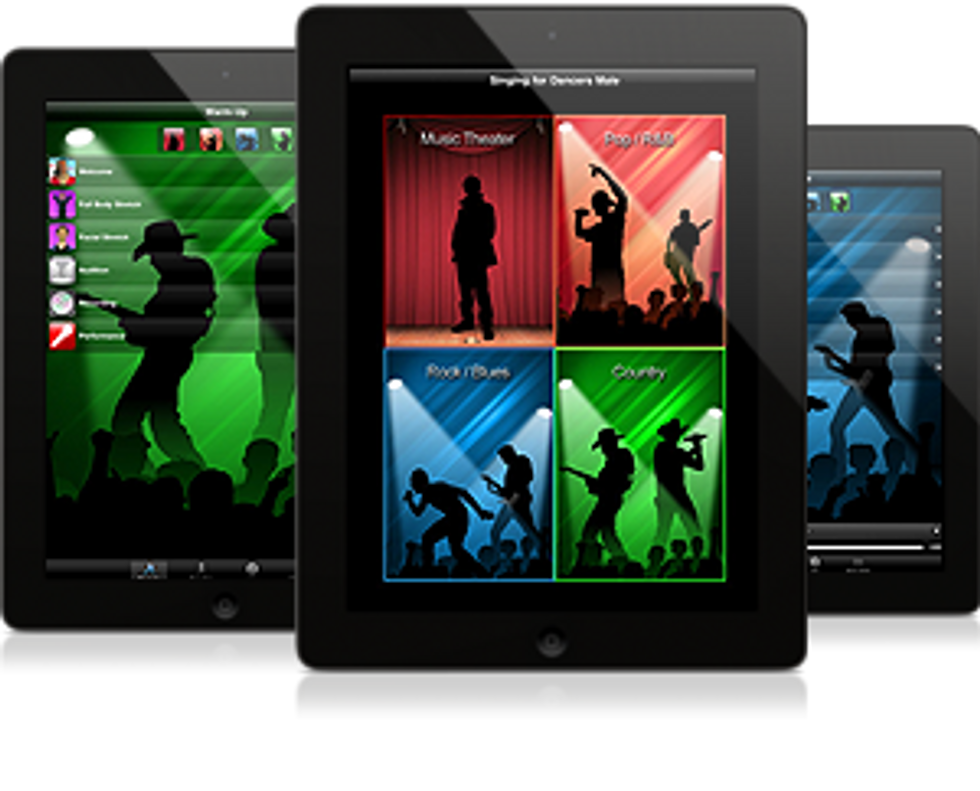New "Singing for Dancers" App
You’re a dancer, so when you’re asked to sing at an audition, it can be pretty scary. But dancers who can sing, even just a little bit, are more likely to get work on Broadway and beyond. Dance Spirit has collaborated with Liz Caplan Vocal Studios to create the “Singing for Dancers” application for your iPad, iTouch or iPhone.
Liz Caplan has been training singers in the Broadway world for more than 30 years. A private lesson with Liz is tough to get—she’s often busy working with Neil Patrick Harris, Brooke Shields and other celebrities—but with this iTunes app you can learn to sing with Liz in the privacy of your own bedroom. So what exactly do you need to know before you start belting out your favorite song? We got Liz to share.
Dance Spirit: We all dream of landing a role on a show like “Glee,” but what other possibilities can you consider if you’re a singing dancer?
Liz Caplan:
Community theater, regional theater, touring companies and ultimately Broadway shows. Many choreographers have moved into directing roles and they cherish the dancer first. Dancing is often what people have to do first at theater auditions—if they pass through the dancing portion, then they get to sing. Every choreographer hopes that the dancers they like can also sing—they’ll want to cast those people in the ensemble or as featured members of their musical production.
DS: Let’s say you have a fantastic dancer who is trying to get a job on Broadway. What is the standard for singing that dancer is going to have to meet?
LC:
Being able to carry a pitch, meaning being able to match the music exactly as written. Having a powerful and trained voice helps—you want to be able to pronounce your sound and make it as open as possible so it projects and carries.
DS: You say it’s the fear of singing—not necessarily the lack of a decent voice—that can hold a person back, right?
LC:
If somebody said to you, “Take a deep breath and just sigh really long and loudly,” you probably wouldn’t hesitate. That’s the beginning of singing. Make that big, long inflection and you’re already halfway there in terms of making sound. But when somebody is asked to sing a song without any real preparation, they get scared.
DS: Broadway stars who are powerhouses when it comes to both dancing and singing—like Bebe Neuwirth, Anne Reinking, Sutton Foster and your student (and former DS cover girl) Amy Spanger—are often asked to sing and dance full-out onstage at the same time. How intense is that?
LC:
It’s one of those challenges that you’d think would be utterly impossible initially, but that’s the beauty of the rehearsal process. Most of the time you’re learning the music first and getting the tune and lyrics into your body, and then the choreographer starts working in phrases of eight. Gradually the song and the movement come together into what you end up seeing onstage. You have to work really hard to be able to sing on top of aerobic movement without losing your breath. I ask my students to exercise on a trampoline, StairMaster or bike and sing at the same time. Then we see how long it takes them to get winded!
DS: What is your advice for DS readers who want to sing?
LC
: Listen to music. Listen to different voices and see where you fit in. Then start singing along.
Liz’s List
Need an audition song? These songs are perfect for singing beginners. They have non-intimidating ranges and will give you a chance to get into some storytelling.
- “16 Going On 17” from The Sound of Music
- “I Enjoy Being a Girl” from Flower Drum Song
- “Good Morning Baltimore” from Hairspray
- “Part of Your World” from The Little Mermaid
- “How Lovely to Be a Woman” from Bye Bye Birdie
- “I’m Gonna Wash That Man Right Outa My Hair” from South Pacific
- “Mama Who Bore Me” from Spring Awakening
- “Happiness” from You’re a Good Man, Charlie Brown
- “All That Jazz” from Chicago
- “Out Here On My Own” from Fame




